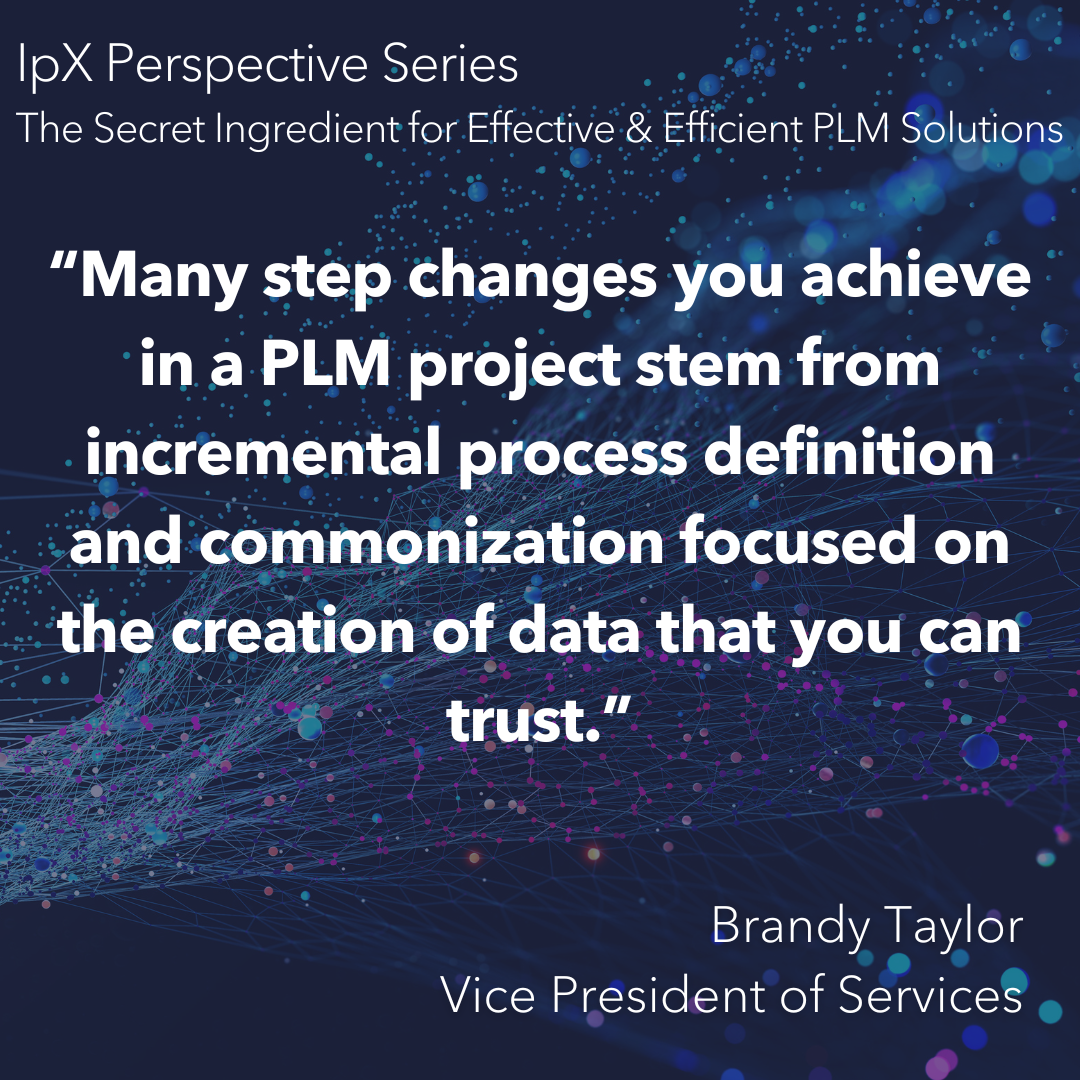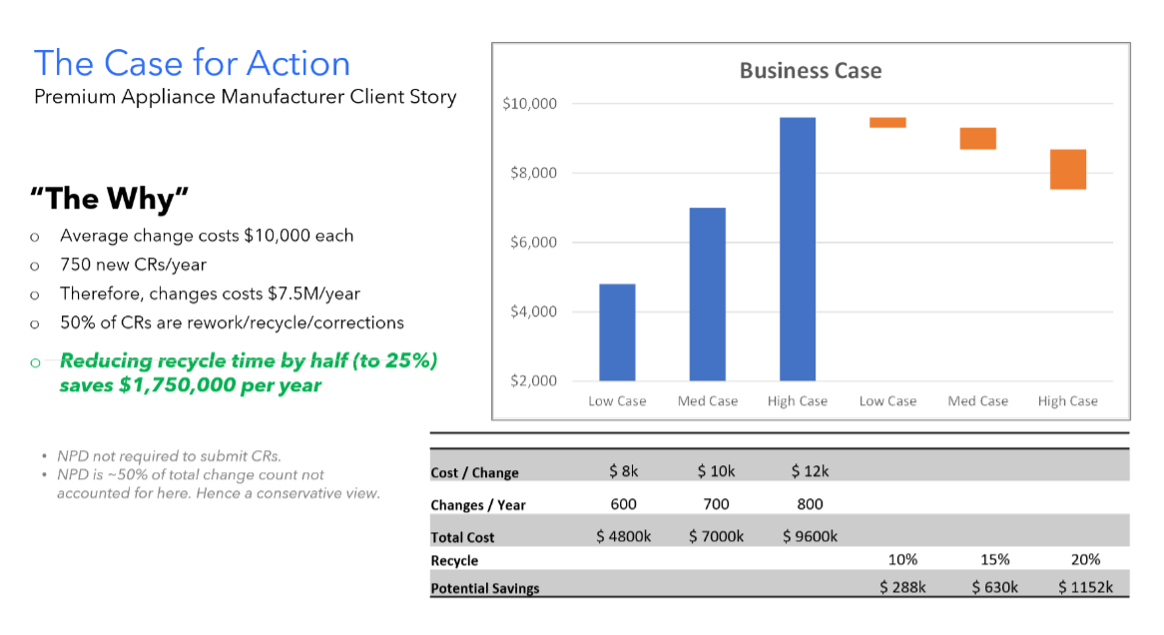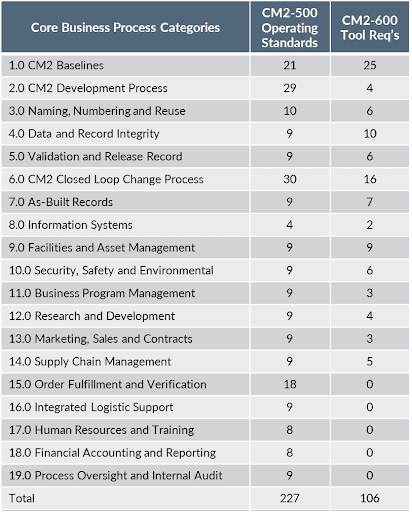The Secret Ingredient for Effective & Efficient PLM Solutions
01/30/2024
Brandy Taylor, IpX Vice President of Services
The Secret Ingredient for Effective & Efficient PLM Solutions
What is Product Lifecycle Management
Product Lifecycle Management (PLM) is the strategic process of managing the complete journey of a product from initial ideation, development, service, and disposal. This process involves both the design and manufacturing of the product, as well as the marketing and introduction of the product to the field. Often a digital PLM tool is utilized to facilitate the PLM processes and collect and to control data efficiently and effectively.
PLM brings together disparate sources of information, data, and teams to work more collaboratively and efficiently. It is a strategy to manage your business's intellectual assets and leverage them not only for process improvement, but competitive advantage. Managing and controlling data robustly within PLM directly improves the quality of the inputs into the enterprise resource planning (ERP) algorithms and other system inputs.
Steps for Successful PLM ImplementationA successful Product Lifecycle Management (PLM) implementation requires a well-planned and executed process. There are several critical steps that can help ensure a successful PLM implementation including the following...
- Establish a common goal and mission that encompasses engineering, manufacturing, procurement, quality, warranty, and IT processes and systems. All departments' requirements must be gathered. Implementation can be phased in over these departments.
- Obtain organizational and executive buy-in with robust metrics that support key stakeholders' goals and objectives.
- Clearly define, review, improve, and document your processes to identify areas that need improvement.
- Ensure all datasets/data are identified, standardized and owned.
- Define sources of truth and determine directionality to other tools.
- Determine attributes/metadata for all datasets.
- Define a robust test plan based on the wholistic process steps for all roles.
- Adequate resource allocation from all impacted departments for requirements gathering, testing and training.
- Do not underestimate the value of a robust Organizational Change Management (OCM) plan early. Fund and resource it in parallel with the project. This includes training people on new or revised processes and tools often and early.

Processes Lead, Tools FollowA lot of time could be passed discussing leadership alignment or a clear ROI. However, both critical aspects can be well researched online. Instead, let's explore an area that seems to get glossed over likely because most people don't view this topic as sexy or fun - well defined business processes!

Clear and concise processes are the requirements that drive your organization to consistent and repeatable business best practices. Business processes should be the foundation for your functional requirements for tool improvement or implementation. Many of the biggest step changes you achieve in a PLM implementation project stem from incremental process definition and commonization focused on the creation of data that you can trust. If your business does not have well defined best practices, the CM2 standard provides a tailorable foundation.
A carefully planned project with well-defined requirements has a higher chance of being executed more efficiently and effectively with less risk, delays, and hidden costs. Through my experience at IpX, I am convinced that a PLM solution, chosen and implemented successfully, will provide benefits to businesses large and small. In addition, I believe PLM will enable cross functional teams to do more with less, make intentional and controlled use of valuable resources, make good business decisions, and increase market competitiveness. However, the tool cannot do it alone.
An entire industry has been built on the concept that you can buy an out of the box application that will solve all your product design & development problems. PLM should cover everything throughout the product lifecycle and collect pertinent data from every discipline in a single, unified location, ensuring accurate data is available to all individuals on the org chart and across the globe.
Please ask yourself these questions:
- Why do you need PLM?
- What problems are you trying to solve? How do you know?
- What are the challenges your business is facing now and potentially in the future (one, two and three years)?
- Have you surveyed your user base?
- Do you have an understanding of your data/documents/datasets and what processes they are associated with?
If you place intentional focus on these questions and improve your processes (business requirements) to solve these specific issues and ensure that your business processes lead the narrative with your tool implementation, then IpX experience demonstrates that you can find success. Business processes should be designed like your product, with requirements. A PLM change management process can be designed to ensure your resources are focused on specific corporate goals and objectives such as speed, quality, profit, cost, risk management, growth, reputation, supplier consolidation, market share, brand reputation or others, and be flexible throughout the ebbs and flows of business.
Many state they want to use a basic out of the box tool configuration to eliminate costly configurations and upgrade efforts. Tool customization is not required to meet many common business requirements. IpX experience shows that many of the modern tools that organizations are interested in can often support most of the organization's needs and wants with an out of the box solution. An out of the box approach still requires careful consideration to configuring the product to meet an organization's business requirements or else they risk SMEs working around, under or over the process and often creating inaccurate, out of control, missing, inconsistent, duplicate, or difficult to use data.
Out of the box tools configurations are intentionally designed to be wide and flexible, to suit a large variety of customer needs and wants. It is a good practice to be intentional about mandatory fields, and guard rails to help support and guide the users to valuable required input. However, overly constraining a tool with an aim to be foolproof is not recommended. This adds cost, time and complexity that has the propensity to make the solution difficult to maintain and upgrade. Much rigor and discipline must come from well-defined processes.
How do you Define Good Processes?

Assessing your processes with the users, SMEs or process practitioners can quickly reveal many of the answers. The people closest to the process are the key to unlocking the power of continual improvement. The subject matter experts doing the work throughout your business understand many of the pitfalls, the tips, tricks, and the hidden factories. Utilizing these key individuals to walk the process from their specific role and perspective, aside from the documented process, is where you will uncover gaps, weaknesses, and opportunities. Be mindful not to exclude inexperienced individuals. These contributors provide a fresh perspective and do not have the well-practiced audit-type "right" answers. Revealing these hidden factories, clearly documenting SME organizational knowledge in a comprehensive "How-To" guide is the key to creating a robust process. This will include but is not limited to solely the "picks and clicks" of the system.
Common SME questions include:
- What is the process that they follow, step by step from their perspective?
- What are the inputs and outputs and interdependencies of each step?
- What are the pain points they commonly deal with within the span of their roles and responsibilities? That they see in general?
- What causes individuals rework, delays, recycle, unplanned or unnecessary efforts?
- What ideas for improvement do they have?
It is common for IpX to find that when interviewed, team members spend a conservative 40% or more of their day-to-day on intervention activities. Most of us think this is normal, even acceptable, to show up for work and spend half our day or more on surprises, other people's issues, or firefighting, all in the name of problem solving or saving the day. If we do the right work at the right time the first time, we will see much less of this waste. Even a small reduction in intervention calculates to over $1M and considerably more annually depending on the size of the organization's global footprint. How much labor, materials and overhead does a company expend to achieve this same amount in profit from product sales? Small wins can add up to huge bottom-line results.
 Importance of Process Metrics
Importance of Process MetricsAside from insights from your valuable resources, process metrics are key measurements used to track the performance of a business process. They are key performance indicators (KPIs) in that they measure how steps in your process are performing and can identify areas for improvement. Process metrics do not have to be complicated, and they can evolve over time as the need for visibility evolves and continual improvement reveals the next problem to solve or bottleneck. Clear and concise processes are repeatable and can be meaningfully measured. Metrics on variable or inconsistent processes are inconclusive.
In conclusion, well-defined processes are crucial for a well planned and executed PLM implementation or improvement initiative. Well-defined processes are crucial for robust PLM data. Well-defined processes reduce the potential for human mistakes, increase repeatability, thereby contributing to increased robustness.

Processes Lead, Tools Follow.
----------------------------------
The IpX Discovery draws its influence by focusing on Organizational Change Management instead of a siloed approach. IpX process experts utilize many Six Sigma tools (led by a Certified Six Sigma Blackbelt) to interview, analyze, develop, and implement a solution that efficiently drives organizations to a clear, concise, valid, and unified goal. When Six Sigma and IpX CM2 methodology are paired together, a solution can be defined in weeks when organizations alone find this challenging to complete due to capacity constraints, conflicting opinions, feelings and emotions.
CM2 is the global enterprise standard for configuration management, including all relative disciplines such as change management, requirements management, release management, records management, document management, and data management. CM2 provides a comprehensive methodology for managing the configuration of a product, system, and/or service throughout its life. The CM2 methodology enables organizations to move with speed while preventing corrective action, quality escapes, and recalls. The table represented on this page references the CM2-500 and CM2-600 standards.
AUTHOR: BRANDY TAYLOR
Brandy Taylor is the VP of Services at IpX with over 20 years of experience in engineering and project management within the aerospace, civil, military and automotive industries. Brandy holds a Bachelor's and Master's degree in Aerospace Engineering from the University of Michigan, and a CM2-Professional certification. Connect on
LinkedIn
ALWAYS EVOLVE WITH IPX

IpX believes organizational sustainability, scalability and transformation are born from the continual evolution of people, processes, systems and data. Through our leading workforce development platform known as the IDEA Academy, our CM2 standard and certification courses, True North professional services, and digital solution advisement, we enable your organization to always evolve based on a functional blueprint for the ecosystem of tomorrow. Drive innovation, create a better customer experience, and enable your workforce as an organization built for change, speed, quality and resiliency.

 Clear and concise processes are the requirements that drive your organization to consistent and repeatable business best practices. Business processes should be the foundation for your functional requirements for tool improvement or implementation. Many of the biggest step changes you achieve in a PLM implementation project stem from incremental process definition and commonization focused on the creation of data that you can trust. If your business does not have well defined best practices, the CM2 standard provides a tailorable foundation.
Clear and concise processes are the requirements that drive your organization to consistent and repeatable business best practices. Business processes should be the foundation for your functional requirements for tool improvement or implementation. Many of the biggest step changes you achieve in a PLM implementation project stem from incremental process definition and commonization focused on the creation of data that you can trust. If your business does not have well defined best practices, the CM2 standard provides a tailorable foundation.  Assessing your processes with the users, SMEs or process practitioners can quickly reveal many of the answers. The people closest to the process are the key to unlocking the power of continual improvement. The subject matter experts doing the work throughout your business understand many of the pitfalls, the tips, tricks, and the hidden factories. Utilizing these key individuals to walk the process from their specific role and perspective, aside from the documented process, is where you will uncover gaps, weaknesses, and opportunities. Be mindful not to exclude inexperienced individuals. These contributors provide a fresh perspective and do not have the well-practiced audit-type "right" answers. Revealing these hidden factories, clearly documenting SME organizational knowledge in a comprehensive "How-To" guide is the key to creating a robust process. This will include but is not limited to solely the "picks and clicks" of the system.
Assessing your processes with the users, SMEs or process practitioners can quickly reveal many of the answers. The people closest to the process are the key to unlocking the power of continual improvement. The subject matter experts doing the work throughout your business understand many of the pitfalls, the tips, tricks, and the hidden factories. Utilizing these key individuals to walk the process from their specific role and perspective, aside from the documented process, is where you will uncover gaps, weaknesses, and opportunities. Be mindful not to exclude inexperienced individuals. These contributors provide a fresh perspective and do not have the well-practiced audit-type "right" answers. Revealing these hidden factories, clearly documenting SME organizational knowledge in a comprehensive "How-To" guide is the key to creating a robust process. This will include but is not limited to solely the "picks and clicks" of the system.

